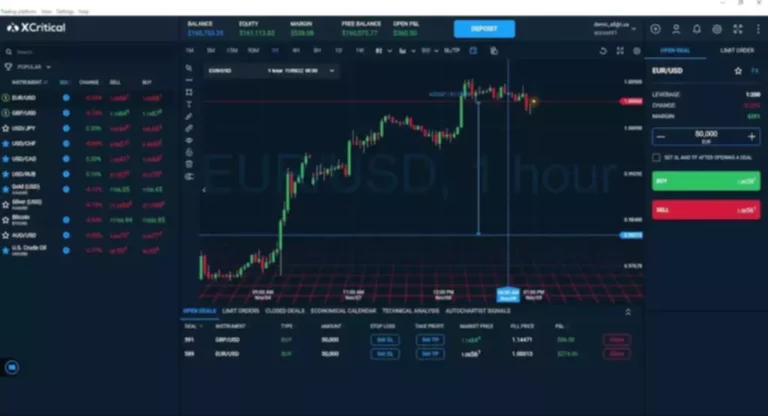For example, futures can help to protect investments without compromising current crypto holdings. This is because futures allow you to hedge a portfolio for a fraction of its cost. For example, if your portfolio costs $100,000, you can hedge it by opening a short position in a futures contract. A 10x contract will only cost you $10,000, which is just 1/10 of your portfolio’s market value. Hedging involves opening positions that are in an opposite or negative correlation to your existing positions. It is practiced by investors and traders to protect their portfolios and mitigate potential losses.
The CME offers cash-settled bitcoin and ether futures, as well as options on their crypto futures contracts. In fact, CME crypto futures volume comprises the majority of all calendar futures volume today, and CME crypto options volumes rival competitors like Bybit, OKX, and Binance. Trading crypto derivatives on fully regulated exchanges has become increasingly attractive after FTX’s collapse, particularly for traditional financial institutions. With that said, https://www.xcritical.com/ CME’s footprint is still relatively small after factoring in perps volume and Deribit’s options volume. OTC derivatives provide increased flexibility on terms and allow users to customize components of their trade like the notional size, tenor, strike, and settlement. OTC markets also offer a wider suite of derivative instruments like variance swaps, average price options, and other exotic derivatives that can be advantageous for hedging specific exposures.
Derivatives trading also enables leverage, allowing traders to control larger positions with a smaller amount of capital — hence magnifying the potential gains. Additionally, derivatives facilitate portfolio diversification, meaning traders can maximize their returns and manage risks more effectively. Trading derivatives across various assets can reduce individual market risks and achieve a more balanced portfolio. Crypto futures are a type of derivative contract that allows two parties to agree on the price of a cryptocurrency at a fixed date in the future. Upon expiration of the contract, the buyer is obligated to receive and purchase the asset, while the seller is obligated to deliver and sell the asset.
What are the advantages of using derivatives?
A bakery trying to buy wheat flour from a farmer would use a derivative contract to ‘lock-in’ the price of wheat flour for the year. This ensures that the bakery business can forecast its budget for the business year and protect itself from the fluctuations of wheat prices. It is these derivatives contracts between a buyer and seller that can be traded in the derivatives market. A derivative is a contract or product whose value is determined by an underlying asset. Currencies, exchange rates, commodities, stocks, and the rate of interest are all examples of derivative assets.
For example, if too many traders have long positions and the price of BTC perpetual contracts is rising excessively above BTC’s spot price, people would have no incentive to open short positions. This payment helps incentivize traders to close long positions crypto derivatives meaning and possibly open shorts bringing the price back down to match Bitcoin’s actual market price. Bitcoin options are also crypto derivative contracts that follow the price of bitcoin, except these do not necessarily have to be settled at their expiration dates.
As such, the trader makes a profit or loss depending on whether the asset price goes up or down. With the help of financial instruments called “crypto derivatives,” investors and traders can make predictions about the future value of cryptocurrencies like Bitcoin, Ethereum, and other altcoins. Due to the volatility and lack of regulation in the cryptocurrency markets, crypto derivatives offer a chance for possible profits but also carry a high risk of loss.

The easiest way to ‘short’ is for you to borrow a security from a third party (an exchange or broker) and sell it immediately in the market since you expect prices to fall. You can re-enter the market once prices have fallen and buy back the same amount of securities that you initially sold. In this case, you will profit from selling the securities initially and buying them back at lower prices. Imagine if you’ve decided to get a cable TV subscription to watch your favorite channels. As a buyer of the service, you will enter into a fixed agreement with the cable company to allow you to get a specified number of channels at a monthly fixed price for a period of 1-year. This is similar to a futures contract, where you specify the exact price that you’re going to pay and the exact product/services you’re going to receive within the specified period of 1-year.
How to Trade Bitcoin Options?
Derivatives date back thousands of years and are often used by commodity producers and consumers to hedge their revenues and expenses, respectively. For example, an oil rig operator may want to hedge its revenue by locking in a price at which it sells barrels of oil in the future. Conversely, an airline operator may want to hedge its input costs by locking in the future price it pays for oil. When trading crypto derivatives, it is important to manage your risk carefully.
- At any time before the expiry date, the crypto option holder can decide whether or not to exercise their option.
- Crypto derivatives facilitate market liquidity, impacting the ease with which traders can open or close positions.
- The cryptocurrency market is known for its volatility, and an abrupt shift in market trends can result in substantial losses for crypto derivatives traders.
- Perpetual futures comprise the lion’s share of derivatives volume today, with calendar futures, options, and various other crypto-specific derivatives accounting for the remainder.
- Structured products come in many different flavors and serve various purposes, but common uses include generating yield, minimizing risk, or structuring payoffs that benefit from the fruition of a particular view or thesis.
But with their complex nature and potential risks, it’s important to understand the ins and outs of the crypto derivatives market before diving in. Crypto derivatives tend to attract professional and institutional traders who contribute to the liquidity of the crypto market. Increased liquidity means there are more buyers and sellers in the market and more transactions can take place.
What are Crypto Derivatives?
Though the term of use of the two methods differs, active traders still consider them important. Forwards is a contract that can be customized to fit the needs of the trader. A Bitcoin derivative, on the other hand, can allow people to trade contracts that follow the price of Bitcoin without ever having to actually own any Bitcoin. When investing for the long-term, Bitcoin may experience occasional bear markets as sentiment changes.

Given Ethereum’s Layer 1 throughput constraints, we expect future developments are most likely to occur on general-purpose Layer 2s (e.g., Arbitrum, Optimism, Starknet, etc.) or bespoke app-specific environments. Before considering trading crypto derivatives, you should carefully evaluate your investment objectives, risk tolerance, and overall financial status. Additionally, it’s critical to have a firm grasp of the cryptocurrency markets and the underlying assets you’re dealing with. It could be beneficial to start with minimal investments and keep a close eye on your positions to reduce risk. Derivatives are primarily used to hedge against downside risk and protect a portfolio from high volatility in crypto asset prices.
Bitcoin, Ethereum, and Ripple are some of the most popular cryptocurrencies and are traded with high trade volumes. Who knows, maybe the addition of derivatives to cryptocurrency is the missing ingredient for worldwide adoption of cryptocurrency. It is no longer news that one of the active players in the 2007 global financial crisis are derivatives. It does not rule them out as important financial tools for investment risk mitigation. The use of derivatives in the crypto space is not regulated, and this alone portends risks. To trade exchanges, traders make use of exchanges or customer-to-customer (C2C) platforms.
The trader cannot effectively run a due diligence check on the other party because over-the-counter transactions do not always stick to strict compliance procedures. In any case, if a buyer purchases a futures contract worth one Bitcoin ($40,000) and it increases to $60,000 by the time the contract closes, the buyer will have realized $20,000 in profit. On the contrary, if the price drops to $30,000 by the time the contract closes, the buyer will have incurred a loss of $10,000. For example, if the current price of Bitcoin is at $40,000, an investor may either buy or sell futures contracts in anticipation of either a price decline or an increase. Crypto derivatives are instruments to manage risks against the volatile nature of crypto assets. Crypto derivatives are trading tools that reduce the cost of overall transactions.

Cryptocurrency derivatives exchange can be used by exchange owners to reach out to additional investors. A crypto derivative trading platform is more flexible than spot margin trading and gives you access to markets that would otherwise be inaccessible to you. Given the vast number of exchanges in crypto, the term spot price in crypto isn’t as clear as in traditional markets. For this reason the term spot price as it pertains to perps is commonly referred to as the index price, and it’s typically calculated as a volume-weighted average of the spot price across multiple spot exchanges.
Covered call vaults and cash collateralized puts vaults are the most common structures, and there are active vaults on ~20 of the largest tokens today despite the dearth of assets listed on option CEXs. ETH vaults also exist for multi-leg short-option strategies, like call-and-put spreads, straddles, strangles, and iron condors. Cega’s exotic option vaults go further on the complexity spectrum, deploying a portfolio of knock-in/knock-out basket options that generate yield in exchange for bearing tail risk. Lastly, we would be remiss if we failed to mention the various other yield enhancement structured product strategies that do not explicitly sell options at all.
Kate’s writing focuses on explaining complex concepts in a simple and accessible way, and she has been published on a number of popular cryptocurrency and blockchain websites. In her spare time, Kate enjoys reading, hiking, and watching Friends over and over. As a trusted global brand, Binance Futures offers an easy-to-use platform, in-depth education and an extensive list of tradable products. By hedging, you need not compromise your Bitcoin holdings or liquidate them at an unfavorable price. Therefore, hedging is definitely a better option than merely waiting out for price recovery and doing nothing.
